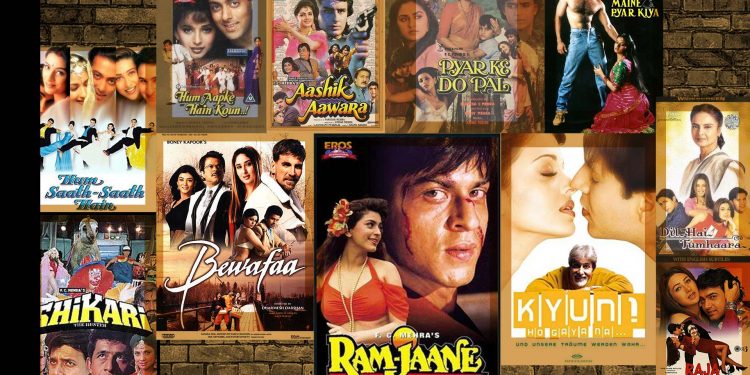Mumbai: It has been one year that the Hindi film industry would like to forget. Why only the Hindi film industry? The same can be said about all the other film industries across India. As productions halted, theatres shut their doors and audiences settled down in front of their TV screens, the Hindi film industry hit pause button in the year. It resulted in revenue losses of maybe thousands of crores. Also thousands of workers were forced into unemployment.
The coronavirus pandemic scripted a tale of unprecedented challenges for the flourishing industry. It came to a screeching halt in 2020. There are no exact figures regarding the losses suffered. Some insiders estimated the losses could be upwards of Rs 1,500 crore to ‘thousands of crores’. They said single screen theatres would have lost anything between Rs 25 to Rs 75 lakh a month.
Approximate losses
Trade analyst Amul Mohan said that approximately 200 Hindi films are made in a year. Bollywood’s yearly box office earnings stand at a little over Rs 3,000 crore. “It has been a different and difficult year. Things have not gone as per plan,” Mohan said.
It is a dual edged crisis, of creating content and also exhibiting it with many producers either postponing or moving to OTT platforms. Theatres in several parts of India have opened after nine months – they closed in March when India went into lockdown. However, people are still fearful of watching a movie in an enclosed space. To compound the problem, there are no new films to lure them in.
Catastrophe for industry
It spells catastrophe for an industry that supports lakhs of people. About five lakh people, including actors, directors and producers, are registered with the Federation of Western India Cine Employees (FWICE). Of these, 2.5 lakh are ‘workers’, including junior artistes, makeup, set designers, carpenters and background dancers, said FWICE president BN Tiwari,
According to trade observer Himesh Mankad, the losses could carry over next year. “On a yearly basis, total Hindi films earnings would have been about Rs 3,000 crore but they stand at Rs 500-600 crore only. So we have lost out on making at least Rs 1,700-2,000 crore. It is a notional loss since 2020 films will release in 2021. (But) there will be interest and overhead costs, because of which each film’s budget could go up by Rs 5 crore-15 crore. This can be called added expenditure,” Mankad said.
Ripple effect
The ripple effect will be felt for a while, he said. “Films will face competition week-by-week and their run will be cut short. Besides, the pandemic is still here so occupancy won’t reach 100 per cent in cinema halls. The fear psychosis will persist till we get a vaccine,” added Mankad.

Raj Bansal, senior distributor and exhibitor, echoed his pessimism. The year 2020 was the worst ever, said Bansal. He has been in the distribution business for almost six decades. He is also the director of ‘Entertainment Paradise’, a three-screen multiplex in Jaipur.
“In Rajasthan, theatres are still closed. They may reopen in January. The situation is likely to improve only when big films are released in theatres as they can bring the audiences in. It’s difficult to put a number to the losses that we have faced. The losses are in huge numbers,” Bansal said.
Fate of single screens
Akshay Rathi, who has cinema houses in Chhattisgarh, Maharashtra and Madhya Pradesh. He said 2020 has tested all the players in the entertainment industry.
“Losses go into thousands of crores as there have been overheads on cinemas, cost of interest on films, holding costs, and other things. Each single screen theatre would have lost anything between Rs 25-75 lakh per month because they have electricity and maintenance bills, salaries to pay and a lot of things to look after with no income,” Rathi informed.

“Things are looking better, vaccinations have started in many parts of the world. So the fear psychosis has reduced. We all need to ensure that we put mid-sized compelling movies for people to come to theatres. This will lay the ground for big films like Salman Khan-starrer Radhe, Sooryavanshi, 83 and Jayeshbhai Jordar,” Rathi added.
Emergence of streaming platforms
Producer Bhushan Kumar of T-Series said they began the year on a good note with Tanhaji but the pandemic was a big blow.
“It resulted in pushing the release of the films for the foreseeable future and halting the shoots of several ongoing projects,” Kumar said. T-Series, he added, had 12 to 15 films slated for release in 2020. However, but most of them will now arrive at a later date.
With theatres closed, the company released some of its films on OTT platforms. Among them were the Anurag Basu-directed black-comedy Ludo and the Bhumi Pednekar starrer Durgamati.
Shoojit Sircar was among the first to release his film Gulabo Sitabo on a streaming platform. He informed he is working on his next theatrical release Sardar Udham Singh.
“But as we all know everything moved on, everything got delayed. We are in the post production stage. So I am sure next year we will be able to present the film. We haven’t yet decided about the release (date) yet,” Shoojit said.
Glimmer of hope
A glimmer at the end of the tunnel however, is now visible.
Film productions halted have resumed with producers adhering to the strict safety guidelines to ensure the safety of the cast and crew. The guidelines include social distancing, masks, PPE kits, face shields and regular temperature checks.
T-Series’ Kumar hopes 2021 will be a better year and Shoojit is hopeful that people will get the confidence to return to theatres once there is a vaccine. “Also, we are waiting for that one film that will change the course,” he said.






































